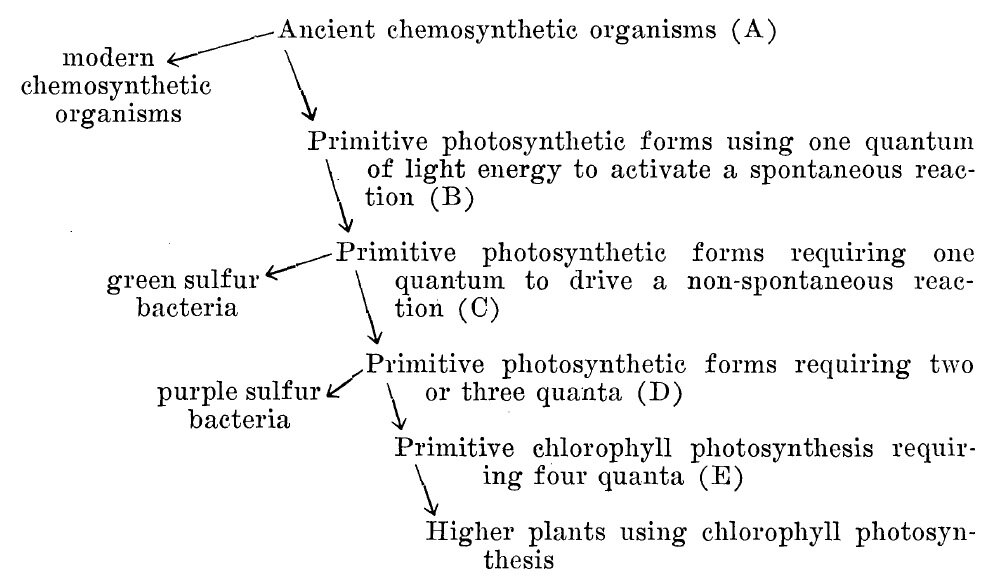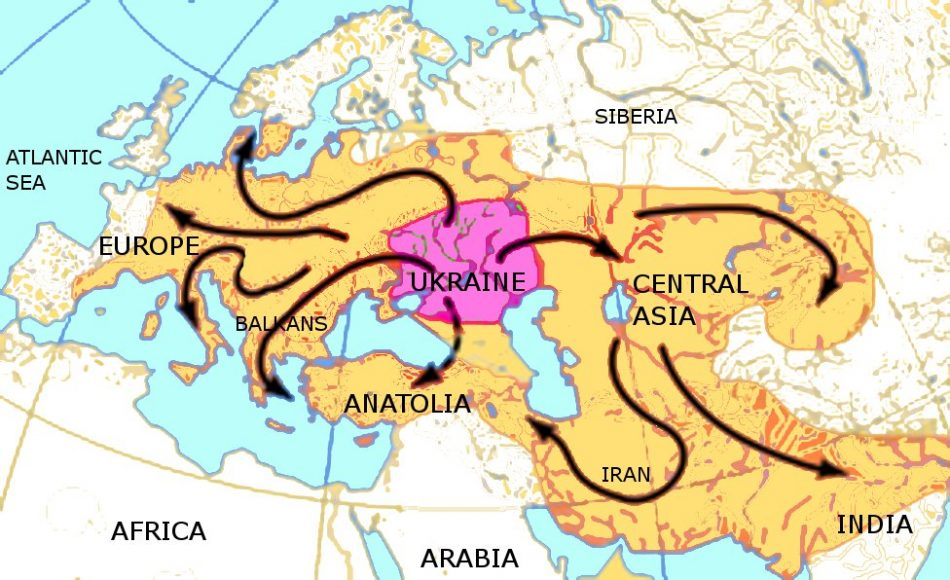The evolution of photosynthesis marks one of the most significant milestones in the development of life on Earth. This biological process, predominantly executed by plants and algae, enabled organisms to convert sunlight into energy while producing oxygen as a critical byproduct. The introduction of photosynthesis fundamentally changed our planet’s atmosphere, particularly during the Great Oxidation Event, which occurred roughly 2.4 billion years ago. This event not only facilitated the rise of aerobic metabolism, where organisms began utilizing oxygen, but also demonstrated the integral link between photosynthesis and oxygen production. Understanding this evolutionary transition, particularly through the study of unique molecules like methyl-plastoquinone and quinone molecules, helps unveil the complex biochemistry that supports all aerobic life forms today.
Unraveling the origins of oxygen production through photosynthesis presents a captivating chapter in the story of life’s evolution. The transition from anaerobic processes to a world dominated by organisms capable of harnessing sunlight for energy transformed Earth’s environment profoundly. As cyanobacteria initiated this revolutionary change, they set the stage for aerobic organisms to thrive, leading to a diverse array of life forms reliant on oxygen for survival. This interdependence of photosynthesis and oxygen metabolism illustrates a symbiotic relationship, underscoring the balance of natural processes. Investigating the biochemical intricacies of substances such as methyl-plastoquinone offers invaluable insights into this pivotal evolutionary milestone.
Understanding Methyl-Plastoquinone and Its Role in Photosynthesis
Methyl-plastoquinone plays a crucial role in the evolutionary narrative of photosynthesis and aerobic metabolism. This remarkable molecule, a variant of quinone, was discovered in bacteria that utilize nitrogen instead of oxygen, which is more common in plant and animal systems. The significance of methyl-plastoquinone in photosynthesis lies in its similarity to the quinones that plants use for converting sunlight, carbon dioxide, and water into glucose while releasing oxygen as a byproduct. This discovery highlights a deeper connection between seemingly disparate metabolic processes, suggesting a more intricate interplay of molecules in the evolutionary chain leading to the photosynthetic capabilities of plants.
The unexpected presence of methyl-plastoquinone in bacteria raises questions about the metabolic pathways that may have existed before large-scale oxygen production. Traditionally, quinones have been categorized into aerobic and anaerobic types, with distinct functions in oxygen utilization and energy conversion. By identifying a third category represented by methyl-plastoquinone, researchers open new avenues to explore the evolutionary adaptations that allowed early life forms to harness oxygen independently, potentially linking these processes to the emergence of photosynthesis in cyanobacteria, which fueled the Great Oxidation Event.
The Great Oxidation Event: A Turning Point in Earth’s Atmosphere
The Great Oxidation Event, occurring approximately 2.4 billion years ago, marked a pivotal moment in Earth’s atmosphere when cyanobacteria began producing significant amounts of oxygen through photosynthesis. This event had profound implications for life on Earth, as it facilitated the evolution of aerobic metabolism in other organisms. As oxygen levels rose, it allowed for the development of more complex life forms and altered the course of evolution itself. The relationship between the production of oxygen by photosynthesis and its consumption by aerobic organisms remains a key focus for scientists studying the history of life on our planet.
This event not only demonstrates the interconnectedness of photosynthesis and aerobic metabolism but also illuminates the chemical complexity that underlies these processes. The evolution of aerobic metabolism allowed organisms to exploit oxygen for energy production more efficiently, leading to greater biological diversity. Studies like those of methyl-plastoquinone suggest that some form of oxygen-utilizing mechanism may have predated widespread oxygen production, hinting at a network of life forms interacting with oxygen long before it became abundant enough to support complex life.
Photosynthesis and Aerobic Metabolism: The Chicken or the Egg?
The question of whether photosynthesis or aerobic metabolism came first is a classic dilemma in biochemistry. Recent discoveries, including the work surrounding methyl-plastoquinone, suggest that both processes might have evolved concurrently. While plants capitalized on sunlight to produce oxygen, it appears that some early bacteria had developed mechanisms to utilize oxygen before it became prevalent in the atmosphere. This simultaneous emergence may indicate a more complex evolutionary web where organisms adapted to their environments in tandem, complicating our understanding of biological evolution.
As scientists unravel the intricate details of these processes, the implications are profound. This research sheds light on how the evolution of photosynthesis not only supported the growth of oxygen-producing organisms but also set the stage for aerobic metabolism among various life forms. Understanding this relationship provides insights into the biochemical pathways that led to the diversification of life, illustrating how interdependent the processes of oxygen production and consumption truly are.
The Significance of Quinones in Metabolism
Quinones, including methyl-plastoquinone, are essential molecules that play versatile roles in the metabolism of all living organisms. They function as electron carriers in cellular processes, particularly in respiration and photosynthesis, contributing to the efficient conversion of energy. The discovery of methyl-plastoquinone showcases the adaptability and evolution of quinone structures, emphasizing their importance not only in current metabolic pathways but also in the evolutionary history of life on Earth.
The role of quinones extends beyond simple metabolic functions; they serve as critical links in the biochemical narrative of life. Understanding these molecules can unveil the evolutionary adaptations that facilitated the transition from anaerobic to aerobic life. Such insights can reveal how early life forms might have utilized these molecules during their development, leading to the sophisticated energy metabolism we observe in contemporary organisms.
Exploring the Molecular Fossil Record: Tracing 2 Billion Years of Evolution
Research on molecules like methyl-plastoquinone is akin to embarking on a journey through a molecular fossil record. By studying these ancient molecules that have survived for over 2 billion years, scientists can glean insights into the evolutionary adaptations that have shaped life as we know it. This ‘living fossil’ provides a window into historical metabolic processes, offering clues about the conditions and biochemical strategies employed by early life forms.
Through the lens of methyl-plastoquinone, it becomes evident that molecules retain a memory of life’s evolutionary past. The ancient adaptations revealed through these molecules illustrate the interplay of environmental changes and biological responses that shaped the trajectory of life on Earth. Understanding these connections can refine our perspective on the origins of photosynthesis and aerobic metabolism while contributing to the ongoing narrative of life’s evolution.
Oxygen Management in Early Life Forms
The ability to manage and utilize oxygen efficiently was a monumental advancement for early life forms. As oxygen production from photosynthesis began to rise during the Great Oxidation Event, organisms faced the dual challenge of harnessing this gas for energy while also mitigating its potentially harmful effects. The evolution of mechanisms to safely navigate oxygen exposure was essential for survival, as reactive oxygen species can be detrimental to cells lacking sufficient protective strategies.
This necessity led to the emergence of various biochemical pathways and regulatory systems that allowed organisms to adapt to oxygen-rich environments. By optimizing how they processed oxygen, early life forms could thrive in conditions that were once inhospitable, paving the way for the complex diversification we observe in modern ecosystems. The advancements made in oxygen management demonstrate the resilience and innovative strategies inherent in early evolutionary processes.
Comparative Analysis of Quinones Across Species
A comparative analysis of quinones across various species reveals significant insights into evolution and metabolic diversity. Quinones vary not only in structure but also in their function across different life forms, highlighting their adaptability and evolutionary significance. For instance, quinones used in photosynthesis differ markedly from those employed in aerobic respiration. This structural diversity suggests that these molecules have evolved specific functions tailored to the metabolic demands of the organisms that utilize them.
Exploring the differences and similarities in quinone molecules among plants, animals, and microorganisms can illuminate evolutionary pathways and adaptations. For instance, the ancestral versions of these molecules may have served multiple functions before specialization occurred, indicating a gradual evolution from simple to complex metabolic architectures. This comparative approach enhances our understanding of the role quinones play in supporting life, revealing the intricate biochemical relationships that sustain energy flow within ecosystems.
The Evolutionary Implications of Biochemical Discoveries
The study of biochemical discoveries, such as methyl-plastoquinone, not only unravels the intricacies of metabolic pathways but also holds significant implications for our understanding of evolution. By exploring how molecules like quinones are repurposed and adapted over time, we can gain insights into the evolutionary pressures that shaped life on Earth. This knowledge contributes to a broader comprehension of the mechanisms underlying biological innovation and survival.
Furthermore, these discoveries challenge traditional views about the linear progression of evolution. Instead, they reveal an intricate web of connections between different metabolic processes, highlighting how organisms may have co-evolved in response to changing environmental conditions. Understanding these dynamics can inform modern biology, enhancing our knowledge of evolutionary biology, ecology, and the ongoing interplay between life forms within their ecosystems.
Future Directions in Photosynthesis and Aerobic Metabolism Research
As research surrounding photosynthesis and aerobic metabolism evolves, future studies will likely focus on the implications of discoveries like methyl-plastoquinone on our understanding of energy production and utilization. Investigating these connections can lead to advancements in biotechnology and synthetic biology, where insights gained from nature can inspire innovative solutions to current energy challenges. Improved understanding of the photosynthetic pathways may pave the way for developing bioengineering techniques that increase the efficiency of biomolecular systems.
Moreover, future research can expand our comprehension of ancient metabolic processes and the environmental factors that influenced their evolution. By integrating findings from molecular biology, paleobiology, and environmental science, scientists can piece together a more cohesive story of life’s evolution. This integrative approach can further unravel the complex relationships between photosynthesis, aerobic metabolism, and the intricate biochemical networks that sustain life on our planet.
Frequently Asked Questions
What is the evolution of photosynthesis and its significance in relation to aerobic metabolism?
The evolution of photosynthesis is a critical process through which organisms like cyanobacteria and plants convert sunlight into chemical energy, producing oxygen as a byproduct. This event, particularly during the Great Oxidation Event, enabled aerobic metabolism to emerge, allowing life forms that consume oxygen for energy to thrive. Understanding this evolutionary connection enhances our knowledge of how life on Earth diversified.
How did methyl-plastoquinone contribute to our understanding of the evolution of photosynthesis?
Methyl-plastoquinone is a molecule that appears to be a link between the biochemical processes of photosynthesis and aerobic metabolism. Discovered in nitrogen-utilizing bacteria, it suggests that some microbial life had capabilities related to oxygen utilization prior to the significant oxygen production characteristic of the evolution of photosynthesis in cyanobacteria.
What role did the Great Oxidation Event play in the evolution of photosynthesis?
The Great Oxidation Event, occurring around 2.3 to 2.4 billion years ago, marks when cyanobacteria began to produce significant amounts of oxygen through photosynthesis. This event was fundamental in allowing aerobic metabolism to develop, which paved the way for complex life forms to flourish by safely utilizing oxygen generated through photosynthesis.
How are quinone molecules linked to the evolution of photosynthesis and aerobic metabolism?
Quinone molecules are integral to both the photosynthesis process in plants and the aerobic metabolism in animals and bacteria. Their diverse forms, including methyl-plastoquinone, indicate a complex evolutionary history, suggesting that quinones played a pivotal role in the biochemical transitions that enabled the evolution of photosynthesis and the advent of oxygen-dependent life.
Can you explain the relationship between photosynthesis and oxygen consumption in terms of evolutionary biology?
In evolutionary biology, the relationship between photosynthesis and oxygen consumption is often framed by the question of which process arose first. While photosynthesis produced oxygen as a byproduct, aerobic metabolism emerged as a means to utilize that oxygen. Recent studies, including findings related to methyl-plastoquinone, indicate that the mechanisms for oxygen use may have existed concurrently with early photosynthesis, revealing a more interconnected evolutionary timeline.
| Aspect | Description |
|---|---|
| Research Focus | Investigating the evolutionary relationship between photosynthesis and aerobic metabolism. |
| Key Discovery | Methyl-plastoquinone, a type of quinone molecule, found in a bacterium, providing insights into the evolution of photosynthesis. |
| Significance | The discovery may represent a missing link in understanding the evolution of oxygen production and consumption. |
| Historical Context | Relates to the Great Oxidation Event when significant oxygen production began around 2.3 to 2.4 billion years ago. |
| Expert Insight | Felix Elling noted that certain bacteria might have possessed oxygen-utilizing capabilities prior to cyanobacteria’s oxygen production. |
| Broader Implication | Understanding the evolution of photosynthesis and metabolism enhances knowledge of life’s diversification and oxygen management in cells. |
Summary
The evolution of photosynthesis is a pivotal moment in Earth’s history, marking the transition to an oxygen-rich atmosphere and the advent of aerobic life. Recent research highlights the complexity of this evolution, presenting evidence that suggests both photosynthesis and aerobic metabolism may have evolved together rather than sequentially. Understanding these processes not only sheds light on how early life forms adapted to their environments but also provides fundamental insights into the biochemical pathways that sustain complex life today.



